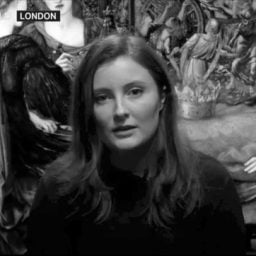Auctions
Why You Need to Know Surrealist and Occultist Ithell Colquhoun
Collectors are taking note of overlooked female Surrealists. Colquhoun's arcane visions are now coming to the fore and her paintings have been soaring over their high estimates at auction.
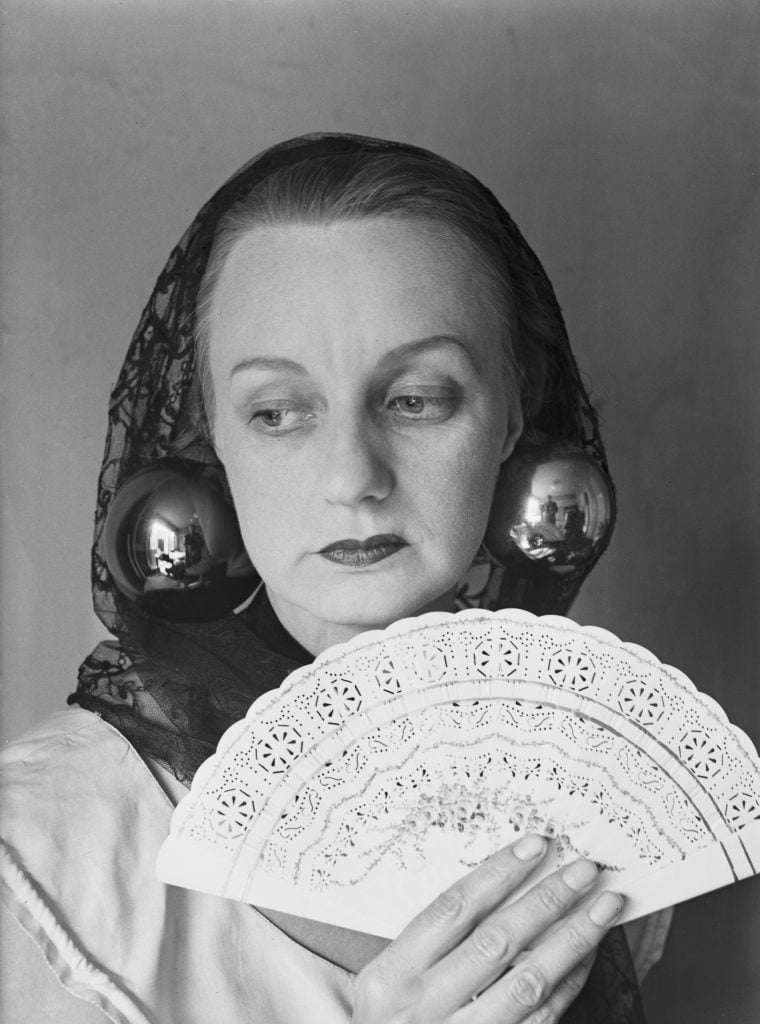
In the rush to rediscover artists who have been unfairly marginalized by art history’s reverence for white men, a new name is coming to the fore.
The painter, writer, and occultist Ithell Colquhoun was a leading light of British Surrealism, known for inventing new “automatic” techniques in the same experimental spirit as her friend André Breton, the writer and founder of the Surrealist movement, and later André Masson and Max Ernst, who adapted the approach for visual art. She has been cited as a major influence on the radical feminist artist Linder, who is celebrated for her punk performances and photomontage.
Born in Shillong, India (then under British rule) in 1906, Colquhoun became interested in occultism as a teenager while studying at the all girls’ private school Cheltenham Ladies’ College. She moved to London in 1927 to attend the renowned Slade School of Art, where she won a prize of her interpretation of the age-old subject, Judith Showing the Head of Holofernes. A sign of her early promise, it was shown at the Royal Academy of Arts in 1931.
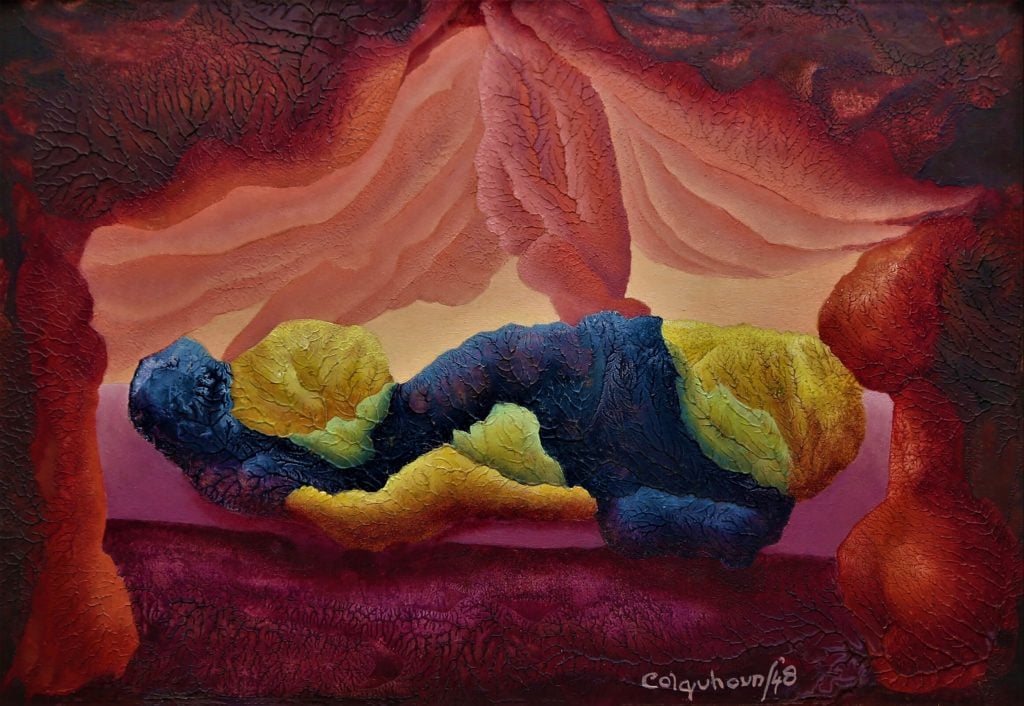
Ithell Colquhoun,
Alcove II (1948). Photo courtesy of Lévy Gorvy Dayan.
By that time, Colquhoun had started traveling extensively around Europe. In Greece, she fell in love with an older woman, Andromache Kazou, who became the subject of an unpublished text titled “Lesbian Shore.” Colquhoun eventually established a studio in Paris, where she was immersed in the latest developments of the avant-garde, including the beginnings of Surrealism. By the latter half of the 1930s, she had moved back to London and continued pioneering new methods despite being sidelined from the British Surrealist Group in 1940, after she refused to give up her interest in occultism. In 1977, this dual interest manifested in Colquhoun decorating her own deck of Tarot cards.
For most of the 1940s, Colquhoun was married to fellow artist Toni del Renzio before the couple’s acrimonious divorce in 1947. Colquhoun began spending more and more time in Cornwall, moving there permanently in 1959. She died in 1988, leaving most of her art to Tate and the National Trust. In 2019, the National Trust donated its archive to Tate, which will mount a landmark exhibition dedicated to Colquhoun at Tate St Ives in Cornwall in early 2025. Attributes of the Moon (1947) is currently included in its “Modern Art and St Ives” display.
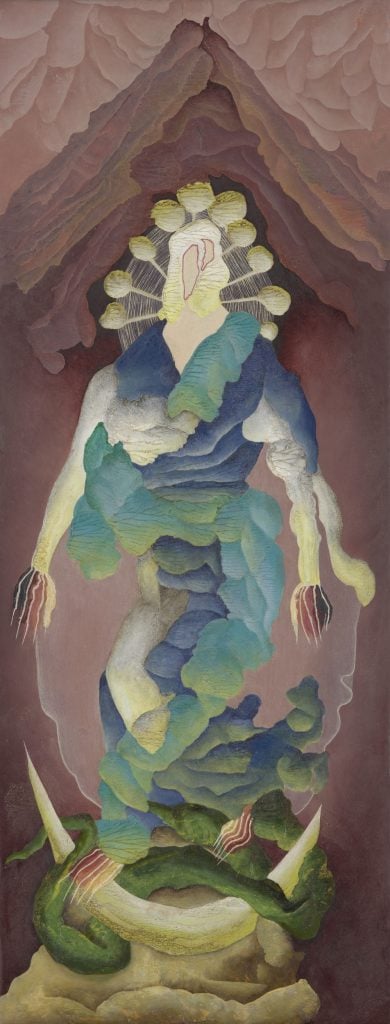
Ithell Colquhoun, Attributes of the Moon (1947). Photo: Matt Greenwood, © Tate.
The “automatic” artistic techniques favored by Surrealists like Colquhoun were used as a means to suppress rational thought and encourage spontaneity and chance in order to free subconscious intent. The process dovetailed perfectly with Colquhoun’s wider interests, since automatism had also historically been used by occultists to commune with the spirit world.
For the Surrealists, some of the most common methods were frottage or frumage, but Colquhoun also invented her own. One of these was parsemage, or the use of paper to lift chalk dust that has been sprinkled over a surface of water. Entopic graphomania was the practice of drawing lines between the subtle, naturally occurring marks on an otherwise plain piece of paper. Colquhoun described it as “the most austere kind of geometric abstraction.”
The painting Volcanic Landscape (1969), recently on view at Ben Hunter Gallery, is a later in life example of Colquhoun’s distinctive approach. A loose, “semi-automatic” style was attained by using diluted enamel paint straight onto paper or board that was then tilted so that the pigments would pour, pool, and bleed into each other. Enough control was retained by Colquhoun to produce a striking, red-streaked composition that resembles a fiery landscape.
“Drawn to paint moments of change and metamorphosis, volcanos were a recurring theme,” wrote art researcher Dr Richard Shillitoe. “Jagged forms, like the tracings of a seismograph, track the progress of the eruption. Her gestures seem to mimic the spurts of lava as the earth ejaculates the molten rocks.”
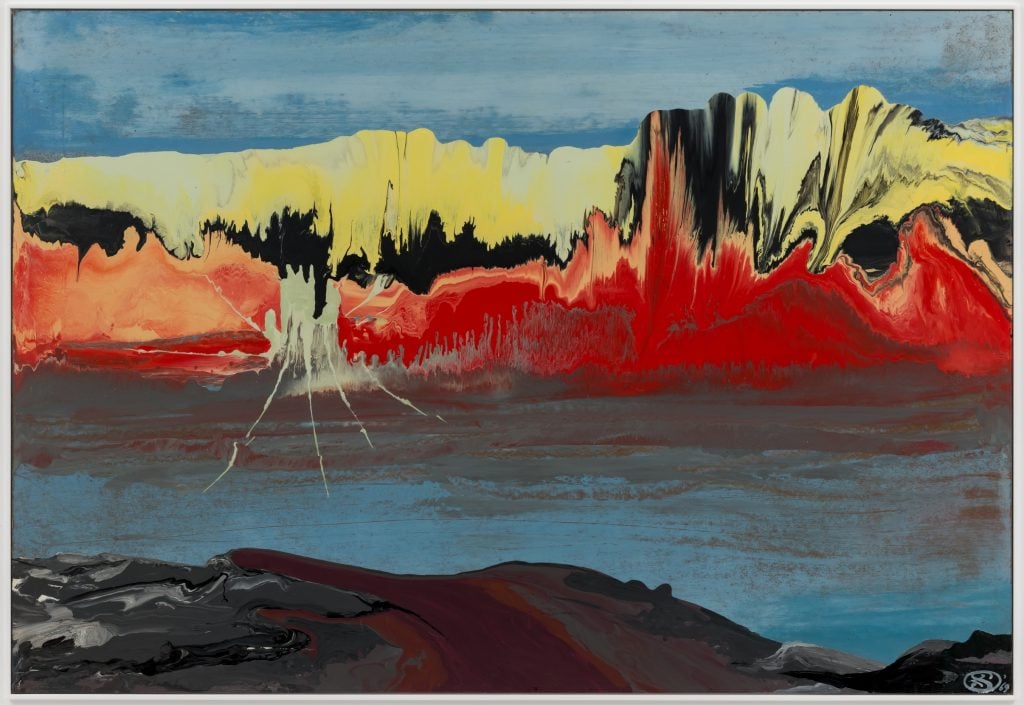
Ithell Colquhoun, Volcanic Landscape (1969). Photo: Jack Elliot Edwards, courtesy Ben Hunter, London.
An appetite for “rediscovered” historical artists is one of the few corners of the art market that remains relatively unaffected by the current economic downturn. As arrows have mostly pointed down for contemporary art prices this year, a rare moment of excitement in the sale room was reserved for another British artist, Leonora Carrington. Perhaps the best known female Surrealist artist, she achieved a new auction record of $28.5 million at Sotheby’s evening auction of modern art on May 16.
Fitting this trend, oil paintings by Ithell Colquhoun have been catapulting past their estimates of late. A new record of £258,600 ($311,191) was set at Bonhams Knightsbridge in November 2022 for the subtle leaf painting Anthurium (1936) (all fees include buyer’s premium). The high estimate was just £12,000 ($14,440).
During the “Blazing a Trail: Modern British Women” sale at Bonhams London last fall, the painting Sunflower (1936) fetched a sum of £79,140 ($98,030) over a high estimate of £30,000 ($37,160) and Nativity sold for £63,900 ($79,152) compared to its high estimate of £8,000 ($9,909). After decades lying dormant, it appears Colquhoun’s prices are on the verge of a volcanic eruption.
A show exploring themes of magic, alchemy, and occultism that will feature work by Ithell Colquhoun opens at Lévy Gorvy Dayan in London on October 1 until December 21, 2024. “Ithell Colquhoun: Between Worlds” will open in early 2025 at Tate St Ives.

